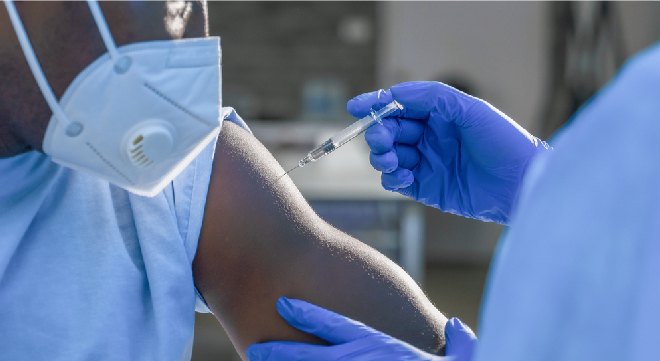There is sufficient evidence to suggest that a fourth wave of Covid-19 will emerge in December – and its severity will most likely depend on whether immunity is built in most of the adult population through vaccination to augment any natural immunity, the Actuarial Society of South Africa (ASSA) says.
As of 24 October, only 29% of South Africa’s adult population was fully vaccinated, compared with a target of 67% by the end of 2021, according to the Department of Health.
South Africa applies a 42-day waiting period between the first and second dose of the Pfizer vaccine, which means that unvaccinated South Africans will have to get their first jab before the end of October in order to be considered fully vaccinated with Pfizer towards the end of December.
People are considered fully vaccinated two weeks after their second Pfizer dose or after their single Johnson & Johnson jab.
South Africa’s experience could mirror that of many countries with large-scale vaccine roll-outs, most notably the United Kingdom, with a significant wave of cases but only a muted wave of severe infections and deaths, according to the ASSA Covid-19 Working Group.
However, Working Group member Adam Lowe says achieving this would require a large number of people to come forward very quickly to be vaccinated.
“The logistics of the roll-out would have to be significantly enhanced to ensure vaccines reach especially the rural and less technologically enabled population, as well as overcoming the vaccine hesitancy and outright anti-vaccine sentiment which still exists.”
Experiences in other parts of the world
An analysis of experiences in other countries by the Working Group shows that a high vaccination rate appears to have a material impact on the severity of Covid-19 infection waves.
Lowe says Italy and Germany, for example, appear to be at the start of their fourth waves, but without large peaks in either cases or deaths yet. In Italy, 73.5% of its population is fully vaccinated, while Germany is at 66.7%.
He says a study of the UK and the United States indicates a similar scenario where case numbers remain high but severe infection and death rates are still comparatively low.
According to Lowe, the UK and the US achieved relatively high vaccine roll-outs and significantly eased lockdown restrictions before the onset of their third waves.
In the UK, 71.3% of the population is vaccinated, and in the US fully vaccinated people account for 64.5% of the population.
Lowe says the statistics from the UK and the US seem to indicate that vaccination rates play a role in reducing severe infection leading to illness and death even in a population where the virus continues to spread.
The two countries that appear to be out of sync with the wave patterns experienced by the rest of the world are India and Brazil, which are among the hardest hit by the pandemic.
Lowe points out that both appear to be experiencing one very large infection wave with no discernible wave patterns. In India, only 37.4% of the population is fully vaccinated, while Brazil has vaccinated 69.4% of its population. Both are also among the most populated countries in the world.
Lowe says since no country has yet experienced a full fourth wave, it is impossible to predict what the South African experience will be. However, data is emerging that shows that some countries, notably the UK, have been able to weaken the link between cases and deaths most likely through a comprehensive vaccine roll-out.
He does not discount that increasing levels of natural immunity also play a role, but suggests that vaccination provides a more certain method of ensuring widespread immunity in a population and of managing population immunity over time as infection levels vary.
Key drivers of infection rates
Lowe says that in modelling the Covid-19 pandemic, it has become evident that the key drivers determining the waves of infection are:
- The infectiousness and transmissibility of the particular virus variant prevalent in a population;
- Population behaviour that influences the spread of the virus, such as gatherings, mask wearing and social movement; and
- The degree of immunity already present in the population, whether acquired through vaccination or previous infection with the virus.
Lowe cautions vaccinated people against letting their guard down too quickly, because one of the potential triggers of a severe fourth wave that cannot be disregarded is the potential of a new variant emerging against which the existing vaccine could provide insufficient protection.



